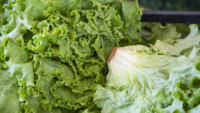CDC: Irradiation Could Have Helped Prevent 155 Foodborne Illness Outbreaks in the Past Decade

Image credit: RENATOK via Pixabay
Irradiation is a safe, effective, and proven method of pathogen inactivation on foods. Although food irradiation is approved for use in the U.S., its adoption has not been widespread due to large fixed costs and the perception of consumer unwillingness to purchase irradiated food.
To investigate the potential impact of more widespread adoption of food irradiation, the U.S. Centers for Disease Control and Prevention (CDC) analyzed a decade (2009–2020) of national foodborne illness outbreak data for four significant foodborne pathogens: Campylobacter, Salmonella, Escherichia coli, and Listeria monocytogenes. CDC found that nearly one-third (32.2 percent) of the 482 outbreaks included in the dataset were linked to irradiation-eligible foods that had not been irradiated.
Of the 155 outbreaks associated with a food that was eligible for irradiation but was not irradiated, 52 were linked to chicken, 31 to beef, and 29 to eggs, comprising 72 percent (112 outbreaks). The total 155 outbreaks led to 3,512 illnesses, 463 hospitalizations, and 10 deaths.
Although food irradiation’s efficacy in pathogen reduction depends on factors like temperature and water content, the process typically eliminates a large proportion of pathogenic microorganisms, and could therefore have helped to prevent outbreaks linked to eligible but non-irradiated foods, says CDC. The researchers underline that prioritizing food irradiation efforts, particularly for chicken, beef, and eggs, could substantially reduce outbreaks and illnesses.
Looking for a reprint of this article?
From high-res PDFs to custom plaques, order your copy today!






